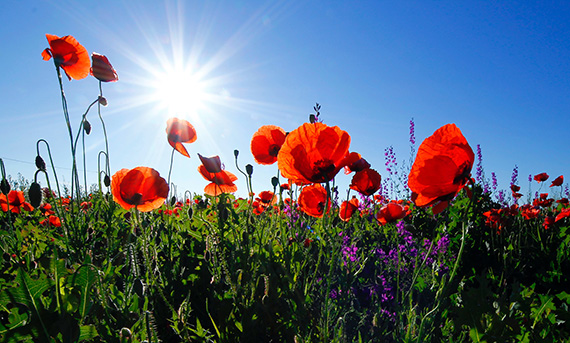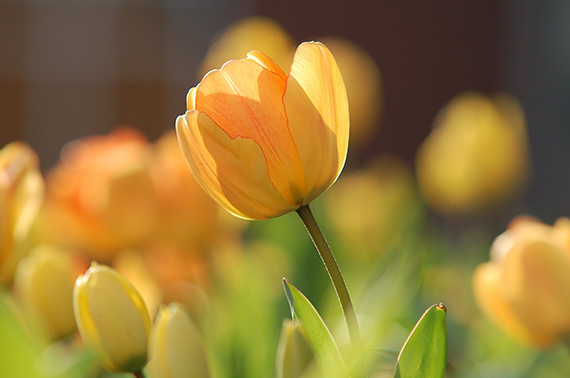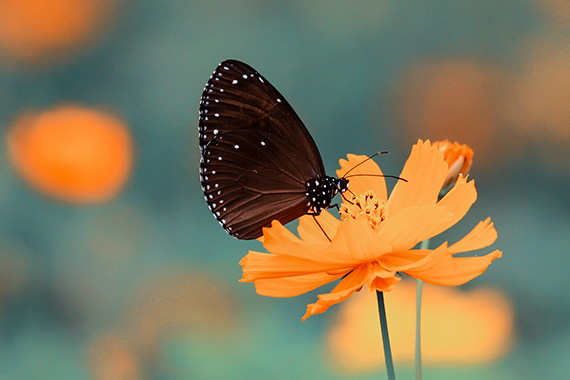With the advent of digital cameras and the huge amount of features, close-up photography has become the domain for everyone. The simple macro feature on the current generation of digital compacts has opened up this world to virtually anyone with a camera. Of course the ideal situation is the use of SLRs but it’s not limited to them.

Photo by Corina Ardeleanu
One of the first accessories I bought for my film SLR way back in the 1980s was a set of close-up filters that screwed on the end of my lens. This added a new dimension to my photography and I was able to get in really close to my intended subjects, flowers. Although, I did dabble a bit in shooting some of the slower insects and bugs. But flowers were still my focus. Here are some simple tips that will help you shoot better flower photos.
Look for the Right Weather Conditions and Lighting
It’s totally useless if you plan to shoot flowers on a day when high wind speeds are predicted. Movement is critical, especially when shooting close-ups; your image will be spoiled if you don’t take this into consideration. Lighting is critical as you need to shoot under conditions that enhance colors and allow as much natural light as possible. Unless you’re using a ring flash with a digital SLR you’re too close to use the on camera flash system. Never shoot at midday as the lighting is harsh and lacking in contrast.
Select the Right Flower
Getting your lighting, exposure, and composition perfect and then finding that there are blemishes on the flower’s petals or leaves is a let down. Always inspect the chosen subject before setting up your equipment and make sure that it’s almost perfect.

Photo by Serg B
If there are little imperfections, change the angle of view or shoot the opposite side of the flower. You can also remove offending petals and leaves if they don’t leave gaps and make the image look imperfect.
Check the Background
You’re limited to how many angles you can shoot from if the flower is in a garden and not a studio. Make sure that the flower or flowers you choose have a background that is simple and uncluttered and enhances the overall quality of the flower image. If it doesn’t, then consider using a piece of card that complements the dominating color of your chosen flower. Your focus must be on the flower, and a viewer’s eye should be attracted to the flower and not the background.
Use a Tripod
A tripod is essential to flower photography, as you need as much light as possible. Often there will be great diffused light mixed with shadows. A slow shutter speed will always be a problem and this limits hand holding due to camera shake.
Pay Attention to Composition
Flower shots always look their best when taken from the side. Shot from above, they don’t have same appeal as when taken from the side. Use the rule of thirds placing them in a slightly off center position and never right in the middle of the image. Getting in closer will always add to the composition. If you’re shooting macro you’ll see details that really create interest.

Photo by Boris Smokrovic
Creating your own indoor studio and shooting picked flowers is a simple process. Use natural light from a window and a simple colored background, and stunning images will result. Be prepared to experiment and practice your techniques.
As with any photography, take you time to think before shooting but also to get the composition perfect. Don’t be afraid to vary your angles and work at getting a good focal point. Overall, flower photography is exceptionally rewarding, so work at it and create great images.
About the Author:
Wayne Turner has been teaching photography for 25 years and has written three books on photography. He has produced 21 Steps to Perfect Photos, a program of learner-based training using outcomes based education.
Like This Article?
Don't Miss The Next One!
Join over 100,000 photographers of all experience levels who receive our free photography tips and articles to stay current:






A thing of beauty is a joy forever: its loveliness increases; it will never pass into nothingness.
I think that flowers are the most beautiful thing in this world!
May I bring to your attention a factual error in suggestion No. 4?
A wide aperture and a narrow DOF need a ‘faster’ shutter speed and not a slower one as there will be more light entering the lens with wide aperture.
Haha! Man, I could’ve used this tip today. Went to a flower expo on Yangming Mountain in Taiwan.